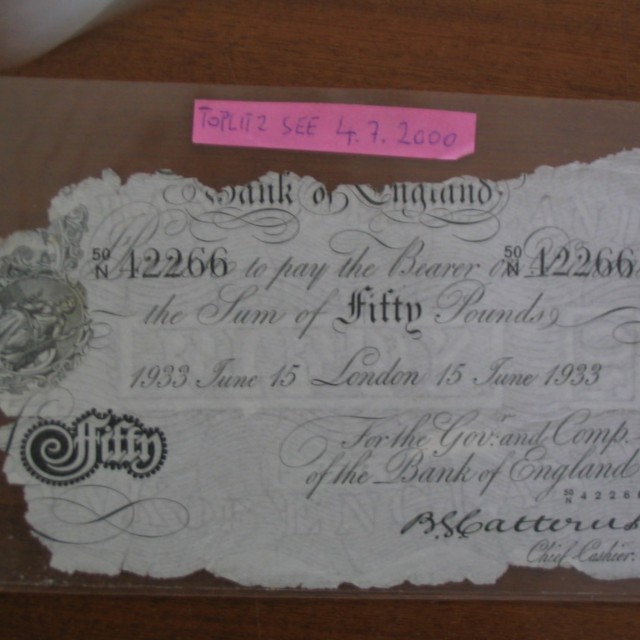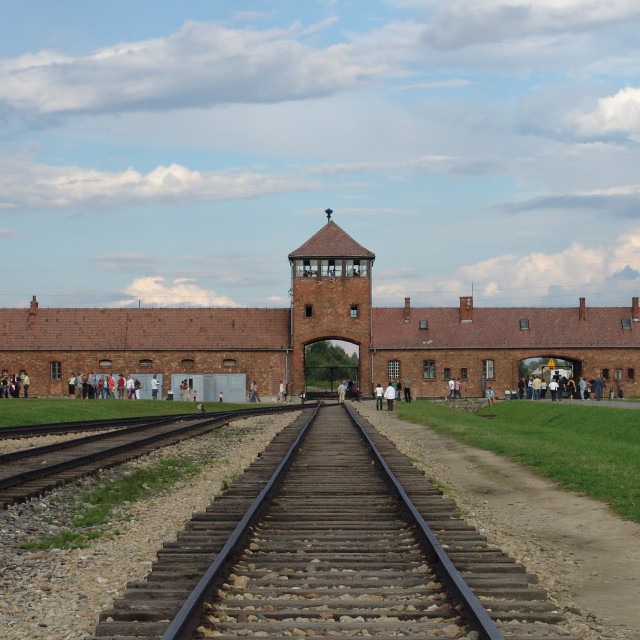They called me, a prisoner, Herr!
Just like all the other prisoners in the Auschwitz-Birkenau concentration camp, Adolf Burger was a mere number. He was awaiting his death. But one day in 1944, he was called to the office of the head of the camp, Hösse, which was very unusual in itself. Adolf Burger recalls: “’Häftling 64 401 zur Stelle!‘ So I presented myself. And he looked at me and said: ‘Are you Mr. Burger?’ He called me Mr.!! So I stuttered out that yes, that was me. ‘And are you a typographer?’ I said: ‘Yes.’ And he got up and said: ‘Herr Burger (he called me, a prisoner, Herr!) tomorrow you are going from Birkenau to Berlin where you will work. Our printing offices need experts like you; you will be allowed to live and work like a free man.’” Adolf Burger became one of the members of a secret group that was in the end transferred to specially adjusted blocks in Sachsenhausen. “I remember how I walked down the stairs and thought to myself that it was not possible. Birkenau came under the NN order (Nacht und Nebel – night and fog). No one was allowed to send letters from the camp and its existence had to be kept secret. And all of a sudden, I was allowed to leave!”
Hodnocení
Abyste mohli hodnotit musíte se přihlásit!
Trasy
Příběh není součastí žádné trasy.
Komentáře

Adolf Burger
Mr. Adolf Burger was born in 1917 in Velka Lomnice town in Poprad region. He comes from a Jewish family. During his youth he was a member of the Haschomer Hacair Jewish organization and later, as adult, was a chairman of this association for short time. He is an educated compositor. After school he shortly worked as a builder and during the years 1937 and 1939 he served in the Czechoslovak army. When the war began he was already working as a compositor in Bratislava, Slovakia. He participated in a secret resistance group of young communists there. The main task of this group was saving the Slovakian Jews from being transported. Mr. Burger’s part was to print fake birth certificates. In August 1942, the whole association was revealed and Mr. Burger with his wife Gisele were arrested and transported to the Auschwitz concentration camp. The twenty two year old Gisele didn't survive the camp. Mr. Adolf Burger, who survived the "Auschwitz hell", was called up to Sachsenhausen in Germany as a compositor in 1944. Together with another 130 prisoners he participated in the biggest counterfeiting operation in the history, started by Nazi Germany in order to weaken the British currency and for their own financial plotting. Thanks to disordered and confused SS officers at the end of the war most of the counterfeiters were liberated. The original plan for the whole group involved in this operation was execution after their purpose had been served. After the liberation of the Ebensee concentration camp, with a borrowed camera Mr. Burger provided documentation of the Nazi barbarities which was later used in his first publicized edition (1945) about concentration camps. Twenty years after the end of the war he started to work as a journalist and published the complete counterfeiter operation in a book called Des Teufels Werkstatt (The Evil’s Workshop). He remains active still today by visiting Germany where he lectures at high schools and talks with students about the holocaust. An Austrian-German movie has been released in 2007 named Die Fälscher (The Counterfeiters). This movie has been inspired by Mr. Burger’s book and won the Oscar for the best International movie.













